Intel Next-Gen Optane DC Persistent Memory Adopted by Several Storage Companies Including ….
And also revealed 1PB SSD, Agilex FPGAs and Ethernet technologies
This is a Press Release edited by StorageNewsletter.com on April 9, 2019 at 2:35 pmAt Intel Corp.‘s Data-Centric Innovation Day, the company revealed next-gen processors and platform technologies to unleash the impact of data for customers.
These announcements reflect the firm’s product portfolio to move, store and process data across the demanding workloads, from the intelligent edge to multi-cloud and back.
2nd-Gen Xeon Scalable processors – Foundation for data-centric transformation
The 2nd-Gen Xeon Scalable platform provides the foundation for a powerful data center platform that creates an evolutionary leap in agility and scalability. Enterprises, cloud and communications service providers can drive forward their ambitious digital initiatives with a feature-rich, versatile platform.
Xeon Scalable processors deliver many capabilities, including:
Optane DC persistent memory
-
Support for breakthrough Optane DC persistent memory, delivering up to 36TB of system-level memory capacity when combined with traditional DRAM.
-
Turbo Boost Technology 2.0 ramps up-to 4.4GHz, alongside memory subsystem enhancements with support for DDR4-2933 MT/s and 16GB DIMM densities.
-
Built-in Deep Learning Boost delivers up to 14×2 inference throughput improvement, and combined with software optimized Intel Distribution of OpenVINO toolkit the company is accelerating the momentum of expanding AI possibilities at the edge and inside the data center. (1)
-
Speed Select Technology provides enterprise and IaaS providers more flexibility to address evolving workload needs. Xeon Scalable processors can be configured to performance settings of core counts and frequencies, effectively creating ‘Three CPUs in One.’
-
Enhanced Infrastructure Management Technologies to enable increased utilization and workload optimization across data center resources.
-
As part of the company’s ongoing commitment to protect customers and their data, side-channel protections are directly incorporated into hardware with the introduction of the 2nd-Gen Xeon Scalable processors.
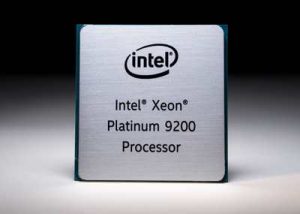
Xeon Platinum 9200 processor
The Xeon Scalable Platinum 9200 processor is designed for HPC, advanced analytics, AI and high-density infrastructures. It features up to 56 cores and 12 memory channels to deliver performance with the highest Intel architecture FLOPS per rack, along with the highest DDR4 native memory bandwidth support of any Xeon processor platform.
Additional Xeon processors:
-
Xeon Platinum Processor (8200 Series)
-
-
Performance, business agility, hardware-enhanced security and built-in AI.
-
Up to 28 cores and 2, 4 and 8+ socket configurations.
-
Top memory bandwidth and a third UPI link for increased I/O bandwidth.
-
-
-
Xeon Gold Processor (6200 Series)
-
-
Networking Specialized (NFVi optimized) SKUs with Speed Select Technology – Base Frequency.
-
Up to 1.76x NFV workload perf improvement and additional flexibility to enable up to 8 high-priority cores that support virtualized workload acceleration for maximum performance and power efficiency.
-
Up to 24 cores (6,552 SKU)
-
-
-
Xeon Gold Processor (5200 Series)
-
-
Networking Specialized (NFVi optimized) SKUs with Speed Select Technology – Base Frequency.
-
Up to 1.76x NFV workload perf improvement and additional flexibility to enable 4 high priority cores that support virtualized workload acceleration for maximum performance and power efficiency.
-
Up to 18 cores.
-
-
-
Xeon Silver Processor (4200 Series)
-
-
Efficient performance at low power and built-in AI.
-
Up to 12 cores and as low as 70W TDP with improved memory channel performance.
-
Turbo Boost Technology and Hyper-Threading technology.
-
-
-
Xeon Bronze Processor (3200 Series)
-
-
Entry-level performance and built-in AI.
-
The 3100 series provides a reliable upgrade over Xeon E processors and is intended for SMBs.
-
Up to 8 cores.
-
-
Workstation
Delivering the performance and scalability that advanced workstation professionals demand, the 2nd-Gen Xeon Scalable processors for workstations are optimized for purpose-built platforms designed for heavily threaded, I/O intensive workloads across market segments such as architecture, engineering, construction , media and entertainment, AI, oil and gas, and life sciences.
Security libraries for data center
Released in conjunction with 2nd-Gen Xeon Scalable processors, Security Libraries for Data Center SecL-DC) is designed to simplify the integration and deployment of hardware-rooted Intel security technologies at cloud scale. SecL-DC brings optimized programming interfaces and management tools for many firm’s security technologies together in one easy-to-use set of libraries and tools compatible with cloud environments like OpenStack, Docker and Kubernetes extensions. It strengthens the company’s commitment to protect data throughout its lifecycle – at rest, in flight and in use.
Intel Select Solutions
The company enhanced its 2019 portfolio of Select Solutions to simplify and accelerate customer deployment of workload-optimized infrastructure and faster time to value. The portfolio features 9 new or updated solutions configurations available today and 6 additional configurations coming soon to market. The configurations are optimized to take advantage of the data-centric product enhancements, plus updates of existing configurations that utilize 2nd-Gen Xeon Scalable processors. With these additions, the firm will offer a total of 21 Intel Select Solutions.
Highlights of the Select Solution portfolio launched include solutions for SAP HANA, visual CDN, AI inferencing, and HPC and AI converged clusters, as well as updated solutions for foundational workloads such as SQL Server, NFVi, VMware vSAN and Microsoft Azure Stack HCI. The company has more than 35 partners currently offering solutions or that plan to build, verify and sell 2nd-Gen Xeon Scalable processor-based solutions in the future.
Security Innovation Spotlight: Intel Select Solution for Hardened Security with Lockheed Martin
For security-sensitive organizations, Intel engineers have worked with Lockheed Martin Corporation, a provider in security, to deliver a hardened virtualization platform. This Select Solution for Hardened Security is a full-stack solution, from hardware through hypervisor.
It features:
-
Greater data confidentiality through VM memory encryption and cache isolation
-
Robust platform integrity with boot all the way through to run time, and
-
And Improved availability through more deterministic QoS and protections from Noisy Neighbors, whether malicious or not.
Together, this delivers a benchmarked and optimized platform, which removes guess work and streamlines time to deployment.
Edge-Computing SoCs:
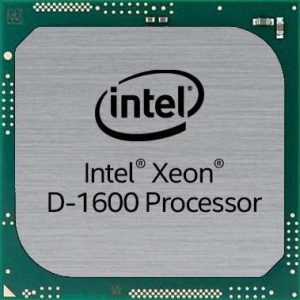
Xeon D-1600 processors – High-density SoC processors for intelligent edge
Theese processors are integrated SoC processors designed for dense environments where power and space are limited, but per-core performance is essential. Combined with built-in Intel QuickAssist technology and Intel Virtualization technology, the processors deliver new levels of workload-optimized performance and hardware-enhanced security benefits for virtualized network functions (VNFs), control plane and mid-range storage solutions. Xeon D-1600 processors feature up to 8 cores.
Agilex FPGAs – FPGA for data-centric world
Intel Agilex FPGAs enable transformative applications and flexible hardware acceleration for edge computing, embedded, networking (5G/NFV) and data centers. The Agilex FPGAs are the first FPGAs designed to take advantage of firm’s innovation including:
-
10nm process technology
-
Transceiver data rates up to 112Gb/s
-
PCIe Gen 5 interface support
-
Intel eASIC devices One API
-
Optane DC Persistent Memory support
-
Compute Express Link, a cache and memory coherent interconnect to future Xeon Scalable processors.
The Agilex FPGAs utilize Intel’s heterogeneous 3D packaging technology, which provides FPGAs with application-specific optimization and customization, delivering new levels of flexibility and agility.
Optane DC memory and storage
With breakthrough performance levels in memory-intensive workloads, VM density and fast storage capacity, Optane DC persistent memory – combined with 2nd-Gen Xeon Scalable processors – accelerates IT transformation to support the demands of the data era, with faster-than-ever analytics, cloud services, virtualization and next-generation communication services.
Optane DC persistent memory – Breakthrough memory and storage
Optane DC persistent memory provides a foundation for data center performance, delivering up to 36TB of system-level memory capacity when combined with traditional DRAM. It allows customers to transform critical data workloads – from cloud and databases to in-memory analytics and content delivery networks.
-
System restart reduction from minutes to seconds
-
Up to 36% more VMs
-
Up to 2x system memory capacity; up to 36TB in an eight-socket system
Optane DC SSD D4800X – HA path to data
The dual-port Optane DC SSD D4800X (NVMe) offers a 24×7 available data path and super-fast storage, breaking through bottlenecks to increase the value of stored data in mission-critical environments. It delivers 9x faster read latency compared to NAND dual port, under write pressure.
QLC 3D NAND SSD D5-P4326 – 1PB in 1U design
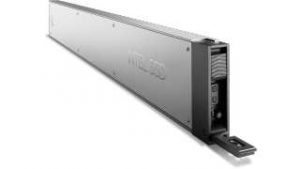 The SSD D5-P4326 (QLC 3D NAND) is an addition to PCIe QLC SSDs and available on the EDSFF compliant drive. The drive and innovative ‘ruler’ form factor delivers massive, cost-effective capacity SSDs to enable HDD and TLC SSD replacement in warm storage. Using QLC in warm storage delivers storage consolidation and cost savings across content-delivery networks, data lakes, scale-out storage and large media stores.
The SSD D5-P4326 (QLC 3D NAND) is an addition to PCIe QLC SSDs and available on the EDSFF compliant drive. The drive and innovative ‘ruler’ form factor delivers massive, cost-effective capacity SSDs to enable HDD and TLC SSD replacement in warm storage. Using QLC in warm storage delivers storage consolidation and cost savings across content-delivery networks, data lakes, scale-out storage and large media stores.
Learn about Intel’s storage innovations and how the company is driving data-centric transformation.
Connectivity solutions
To address the growing demand for data generation and consumption, the firm is introducing a series of next-generation Ethernet products that connect servers and storage to move data faster.
Ethernet 800 Series – Next-gen Ethernet controller
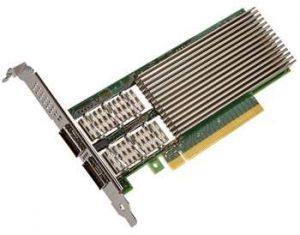 The Ethernet 800 Series controllers and adapters, in production in 2019’s third quarter, are capable of supporting speeds of up to 100Gb/s, which is 4x to 10x more server network bandwidth than many companies have deployed today. These Ethernet series provides capabilities including Application Device Queues (ADQ), which improves application performance and consistency in meeting SLAs. ADQ delivers greater than 50% increase in application response time predictability (3), more than 45% lower latency (4), and more than 30% improved throughput (5) running open source Redis (*), a widely used database among cloud service providers. Other capabilities include enhanced Dynamic Device Personalization (DDP) to improve packet processing efficiency and enable new services, and faster processing of latency sensitive workloads with support of both iWARP and RoCE v2 RDMA.
The Ethernet 800 Series controllers and adapters, in production in 2019’s third quarter, are capable of supporting speeds of up to 100Gb/s, which is 4x to 10x more server network bandwidth than many companies have deployed today. These Ethernet series provides capabilities including Application Device Queues (ADQ), which improves application performance and consistency in meeting SLAs. ADQ delivers greater than 50% increase in application response time predictability (3), more than 45% lower latency (4), and more than 30% improved throughput (5) running open source Redis (*), a widely used database among cloud service providers. Other capabilities include enhanced Dynamic Device Personalization (DDP) to improve packet processing efficiency and enable new services, and faster processing of latency sensitive workloads with support of both iWARP and RoCE v2 RDMA.
Application Device Queues (ADQ)
Software and workloads used in performance tests may have been optimized for performance only on the company’s microprocessors. Performance tests, such as SYSmark and MobileMark, are measured using specific computer systems, components, software, operations and functions. Any change to any of those factors may cause the results to vary. Consult other information and performance tests to assist you in evaluating your purchases, including the performance of that product when combined with other products.
The firm’s technologies’ features and benefits depend on system configuration and may require enabled hardware, software or service activation. Performance varies depending on system configuration. No computer system can be absolutely secure.
Cost reduction scenarios described are intended as examples of how a given Intel-based product, in the specified circumstances and configurations, may affect future costs and provide cost savings. Circumstances will vary. Firm does not guarantee any costs or cost reduction.
Optimization notice: The company’s compilers may or may not optimize to the same degree for non-Intel microprocessors for optimizations that are not unique to Intel microprocessors. These optimizations include SSE2, SSE3, and SSSE3 instruction sets and other optimizations. Intel does not guarantee the availability, functionality, or effectiveness of any optimization on microprocessors not manufactured by the company.
Microprocessor-dependent optimizations in this product are intended for use with Intel microprocessors. Certain optimizations not specific to company’s microarchitecture are reserved for its microprocessors. Refer to the applicable product User and Reference Guides for more information regarding the specific instruction sets covered by this notice. Notice Revision #20110804
(1) 14x was CLX-SP with Intel DL Boost using int8 data type versus SKL-SP using FP32 data type at launch (July’17).
(2) Up to 14x AI Performance Improvement with Intel DL Boost compared to Xeon Platinum 8180 Processor when launched (July 2017). Tested by Intel as of 2/20/2019. 2 socket Xeon Platinum 8280 Processor, 28 cores HT On Turbo ON Total Memory 384GB (12 slots/ 32GB/ 2933 MHz), BIOS: SE5C620.86B.0D.01.0271.120720180605 (ucode: 0x200004d), Ubuntu 18.04.1 LTS, kernel 4.15.0-45-generic, SSD 1x sda INTEL SSDSC2BA80 SSD 745.2GB, nvme1n1 INTEL SSDPE2KX040T7 SSD 3.7TB, Deep Learning Framework: Intel Optimization for Caffe version: 1.1.3 (commit hash: 7010334f159da247db3fe3a9d96a3116ca06b09a) , ICC version 18.0.1, MKL DNN version: v0.17 (commit hash: 830a10059a018cd2634d94195140cf2d8790a75a, model: BS=64, DummyData, 4 instance/2 socket, Datatype: INT8 vs Tested by Intel as of July 11th2017: 2S Intel Xeon Platinum 8180 CPU @ 2.50GHz (28 cores), HT disabled, turbo disabled, scaling governor set to “performance” via intel_pstate driver, 384GB DDR4-2666 ECC RAM. CentOS Linux release 7.3.1611 (Core), Linux kernel 3.10.0-514.10.2.el7.x86_64. SSD: Intel SSD DC S3700 Series (800GB, 2.5in SATA 6Gb/s, 25nm, MLC). Performance measured with: Environment variables: KMP_AFFINITY=’granularity=fine, compact’, OMP_NUM_THREADS=56, CPU Freq set with cpupower frequency-set -d 2.5G -u 3.8G -g performance. Caffe: revision f96b759f71b2281835f690af267158b82b150b5c. Inference measured with ‘caffe time -forward_only’ command, training measured with ‘caffe time’ command. For ‘ConvNet’ topologies, dummy dataset was used. For other topologies, data was stored on local storage and cached in memory before training. Topology specs (ResNet-50). Intel C++ compiler ver. 17.0.2 20170213, Intel MKL small libraries version 2018.0.20170425. Caffe run with ‘numactl -l’.
(3) >50% predictability improvement with open source Redis using 2nd Gen Xeon Scalable processors and Intel Ethernet 800 Series with ADQ vs. without ADQ. Performance results are based on internal testing as of February 2019, and may not reflect all publicly available security updates. See configuration disclosure for details. No product or component can be absolutely secure. Tests performed using Redis Open Source on 2nd Generation Xeon Scalable processors and Intel Ethernet 800 series 100GbE on Linux 4.19.18 kernel. For complete configuration information see the Performance Testing Application Device Queues (ADQ) with Redis Solution Brief.
(4) >45% latency reduction with open source Redis using 2nd Gen Xeon Scalable processors and Intel Ethernet 800 Series with ADQ vs. without ADQ. Performance results are based on internal testing as of February 2019, and may not reflect all publicly available security updates. See configuration disclosure for details. No product or component can be absolutely secure. Tests performed using Redis Open Source on 2nd Generation Xeon Scalable processors and Intel Ethernet 800 series 100GbE on Linux 4.19.18 kernel. For complete configuration information see the Performance Testing Application Device Queues (ADQ) with Redis Solution Brief.
(5) >30% throughput improvement with open source Redis using 2nd Gen Xeon Scalable processors and Ethernet 800 Series with ADQ vs. without ADQ. Performance results are based on internal testing as of February 2019, and may not reflect all publicly available security updates. See configuration disclosure for details. No product or component can be absolutely secure. Tests performed using Redis Open Source on 2nd Generation Xeon Scalable processors and Ethernet 800 series 100GbE on Linux 4.19.18 kernel. For complete configuration information see the Performance Testing Application Device Queues (ADQ) with Redis Solution Brief.








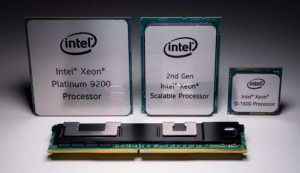
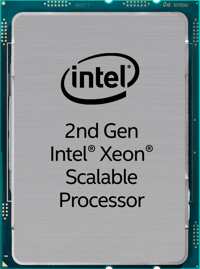
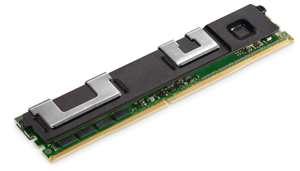
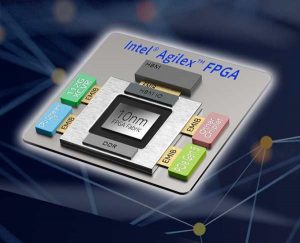

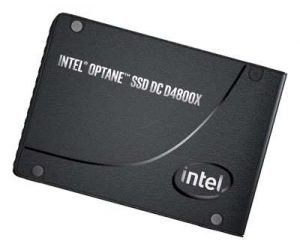






 Subscribe to our free daily newsletter
Subscribe to our free daily newsletter

